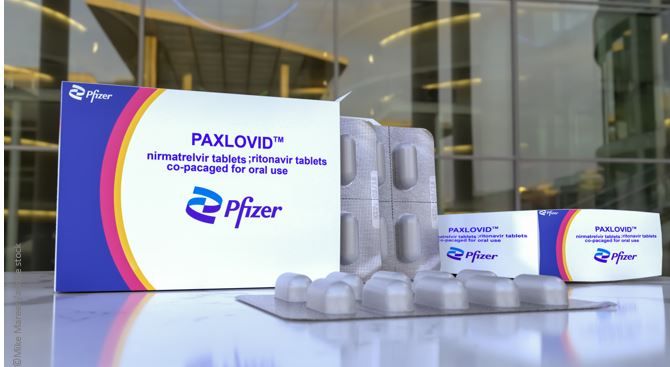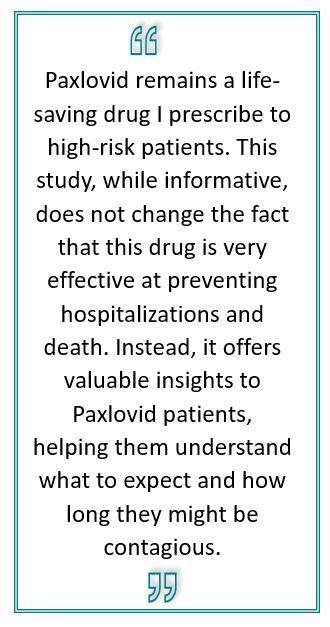- Clinical Technology
- Adult Immunization
- Hepatology
- Pediatric Immunization
- Screening
- Psychiatry
- Allergy
- Women's Health
- Cardiology
- Pediatrics
- Dermatology
- Endocrinology
- Pain Management
- Gastroenterology
- Infectious Disease
- Obesity Medicine
- Rheumatology
- Nephrology
- Neurology
- Pulmonology
Paxlovid Associated with Virologic Rebound in One in Five Patients with Severe COVID-19 Infection
The finding implies the potential for virus transmission after initial recovery from the infection, according to study authors.

One in 5 patients with severe COVID-19 symptoms who were treated with nirmatrelvir-ritonavir (Paxlovid) experienced virologic rebound after an initial recovery and negative test, according to new research published in the Annals of Internal Medicine.1
Paxlovid is an oral antiviral that inhibits the main protease of the SARS-CoV-2 virus and was originally available through a US Food and Drug Administration (FDA) emergency use authorization. It is widely used throughout the US and was granted FDA approval in May 2023. Although it is known to reduce hospitalizations and deaths in those with mild to moderate COVID-19, it has also been associated with virologic rebound since its adoption in clinical care settings.
“We conducted this study to address lingering questions about Paxlovid and virologic rebound in COVID-19 treatment,” Mark Siedner, a corresponding author on the study, said in a Harvard Medical School news release.2 “We found that the virologic rebound phenomenon was much more common than expected…and that individuals shed live virus when experiencing a rebound, implying the potential for transmission after initially recovering from the virus.”
Investigators from Mass General Brigham conducted an observational cohort study to compare the frequency of virologic rebound in patients with and without nirmatrelvir-ritonavir treatment for acute COVID-19. Data was gathered from POSITIVES (Post-vaccination Viral Characteristics Study), a prospective observational cohort study that enrolls persons with acute COVID-19 for longitudinal assessment of viral load, viral culture, and symptom data.
The study cohort included 127 patients; 72 were treated with nirmatrelvir-ritonavir and 55 were not. Patients who received nirmatrelvir-ritonavir were treated for 5 days. The study was restricted to those who were in ambulatory care, had not used other antiviral therapies in the previous 14 days, were enrolled within 5 days of an initial COVID-19 test, and had not already completed a course of nirmatrelvir-ritonavir.

Investigators found that patients treated with nirmatrelvir-ritonavir tended to be older, received more COVID-19 vaccinations, and more commonly were immunosuppressed. In treated patients, 15 (20.8%) had virologic rebound, compared to 1 (1.8%) in the untreated group (absolute difference 19.0%, 95%CI 9.0-29.0%; P=0.001). All patients who had virologic rebound had a positive viral culture result after a prior negative result. Of the patients with virologic rebound, 8 reported symptom rebound.
Additionally, virologic rebound was more common among those who started therapy within 2 days of symptom onset. Patients with virologic rebound also had prolonged shedding of replication-competent virus compared with those who did not.
Study limitations include the observational study design with differences between the treated and untreated groups and that positive viral culture results were used as a surrogate marker for risk for ongoing viral transmission.
"Paxlovid remains a life-saving drug I prescribe to high-risk patients," Jonathon Li, co-senior author on the study, said in a release.2 “This study, while informative, does not change the fact that this drug is very effective at preventing hospitalizations and death. Instead, it offers valuable insights to Paxlovid patients, helping them understand what to expect and how long they might be contagious.”
